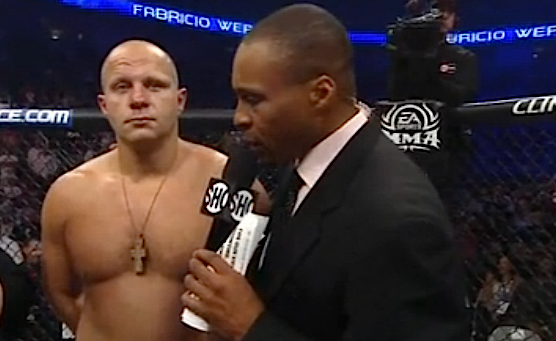
It’s easy to lose. If you fail to execute your game plan, if you fail to perform physically, if you don’t listen to your corner, if you get caught in a submission or you don’t keep your hands up for one instant – that’s all it really takes.
When you’re busting your ass in the gym every day both dishing out and taking beatings, you never ever want to think about it. The only possibility that should enter your mind is the way in which your hand will be raised at the end of the night.
But when fight night finally arrives, what happens if your hand stays at your side, and the fans of your opponent roar?
Most athletes don’t know how to cope with losses well because they don’t think about them. The fear of losing entering a fighter’s mind before their next bout can be a major predictor of pre-competition mental state, which is a huge factor in determining how they’ll perform². After all, your overall mental state is a major contributor to your success in any combat sport¹.
While you likely should not be thinking about losing at all when prepping for a fight, you SHOULD know how to analyze and break down a sub-optimal performance. If you know how to do this, you’ll have a head start on bouncing back from a loss should it actually occur.
Breaking down any loss or sub-optimal performance is a two-step process.
Step 1 – Dissect Your Performance
After a loss, you have the tendency to make assumptions about what happened. Many fighters will try and place blame on an external factor and won’t take full accountability for the way things transpired.
However, the best fighters will examine each aspect of the loss in detail, taking accountability for any position they were put in, then outlining an intricate path to improvement. This new found direction is critical to bouncing back from a loss in the most effective way possible.
While breaking down the physical movements on the tape, answer the following questions³ objectively.
• Controllability – Was your loss within or outside your direct control?
- This aspect is more variable within team sports, as in MMA your performance is typically assumed to be completely within your control.
• Causality – What factors do you believe lead to your loss? Do you attribute your loss to something you did wrong, or something your opponent simply did well that you weren’t adequately prepared to handle?
- For example, did you fail to execute your game plan, or did your opponent execute a strategy you weren’t equipped to deal with?
• Intentionality – Was the position you were in a position you put yourself in on purpose?
- Examples are a decision you made in the fight, a lack of preparation, or an uncharacteristic technical error such as a slip or not protecting yourself at all times.
• Universality – Is the reason for your loss common among other competitors, or was it due to something that only happens rarely?
- For example, did you fail to execute proper footwork and/or head movement (common) or did your opponent catch you in a brand new transition to a gogoplata (rare)?
• Globality – Was the reason for your loss an isolated incident, or is it a common problem?
- Examples include a flaw in your game plan that you didn’t account for (isolated), or a lack of takedown defense or cardio (common).
After all these questions have been answered and you’ve pinpointed the true, objective reasons for your loss, you can then move to the next step. However, if you feel yourself instead making excuses for your loss rather than truly assessing the objective reason for it, do NOT move to the next step before getting some outside analysis from a coach or another fighter.
Step 2 – Resulting Changes
After you’ve dissected your performance, you can now begin to make improvements in your training regimen and game planning process.
These improvements, which will be specific to the errors or weak points you’ve pinpointed, may be as small as technical corrections in your footwork or submission defense, or as drastic as moving to a better gym with more skilled instructors and training partners. Either way, the process of making improvements to your training regimen is critical getting your mind off needless negative thoughts that can be detrimental to your future as a fighter.
In Summary:
If you’ve done your due diligence prior to each competition and you’ve put yourself in the best position possible to success, there is no failure. There is only feedback. With a loss, you’re granted a valuable opportunity to improve aspects of your game that were weak.
It’s also important to note that before any coach can craft an effective training program for an athlete, they must first analyze the technical, physical and psychological readiness of that athlete. Analyzing a loss cannot only be a powerful tool for a fighter, but for a coach as well. Hopefully they don’t happen often, but if/when they do happen, they don’t necessarily need to be treated as the end of the world.
In reality, they’re closer to the beginning.
References:
1. Devonport T. Perceptions of the contribution of psychology to success in elite kickboxing. J Sports Sci Med 2006: 99-107.
2. Stevens M, Lane A, Terry P. Mood profiling during Olympic qualifying judo competition: a case study testing transactional relationships. J Sports Sci Med 2006: 143-151.
3. Terry P and Slade A. Discriminant capability of psychological state measures in predicting performance outcome in karate competition. Percept Mot Skills 1995:81: 275 – 286.
4. Uphill M, Dray K. Giving yourself a good beating: appraisal, attribution, rumination and counter-factual thinking. J Sports Sci Med 2009: 5-12.
